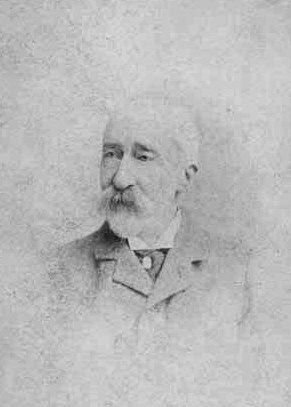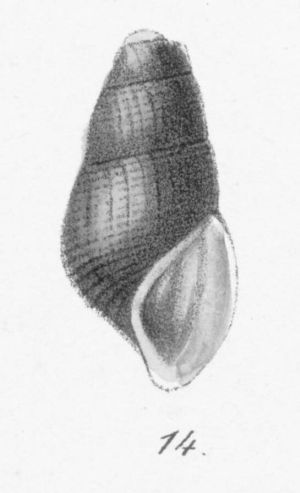|
Richard Hungerford (1834-1909) (figure 1-2) came from a landed family near Cork in Ireland. He was the son of William Hungerford and Jane Toye and grandson of Richard Hungerford, of Clonakilty. His distant ancestor, Sir Thomas Hungerford, Speaker of the House of Commons, had purchased Farleigh Castle in Somerset in 1369. A descendant of Sir Thomas, Captain Thomas Hungerford, settled in Cork where he was married in 1640 and purchased considerable estates in the area. Richard Hungerford is recorded as having a property in Shannon (now Emmet) Square, Clonakilty and his wife Sarah was also born there in 1837. Hungerford was an M.D. and deputy surgeon general of the 53rd (Shropshire) Regiment of Foot, which is recorded as having had tours of duty in Ireland. This regiment was amalgamated in 1881 with the 85th King’s Light Infantry to form the King’s Shropshire Light Infantry (KSLI). In the late 19th century the KSLI saw action in the Sudan but it was also stationed in Hong Kong where, in 1894, it worked in heavily infected areas of the colony during the plague. I have not been able to find anything about the origins of Richard Hungerford’s conchological interests, however he (and his family) had evidently already traveled widely with the 53rd prior to 1881, since one daughter, Frances was born at Jaffna, in what was then Ceylon, in 1865 and another daughter Mary in Newcastle, Jamaica in 1869 so that his interest in tropical shells probably began at this time. He evidently was stationed in Hong Kong in the 1880’s and made collections there. Several marine species are probably named in his honour, including Erronea hungerfordi (Sowerby, 1888), Compressidentalium hungerfordi (H. A. Pilsbry & Sharp, 1887) and Fulvia hungerfordi (Sowerby, 1901), indicating that he was possibly corresponding with these authors at this time. His interest was not, however, restricted to marine shells. In 1881 Hungerford’s friend, the Scottish pioneer of tropical medicine Patrick Manson, contacted him. Manson had been carrying on his work at Amoy in China to determine the cause of filariasis but had recently examined a patient who exhibited microscopic eggs in his bloodsputum. Manson managed to incubate these eggs and observed small jelly-like creatures, provided with cilia, which swam about in all directions. He sensed the organisms must be looking for something in the water and it struck him that it could be for a freshwater snail. If so, he reasoned that the snail must belong to a species common in ponds and streams of southern China, Japan and Formosa, the areas in which this disease, then called ‘endemic haemoptysis’, later identified as being caused by species of the lung fluke Paragonimus, was common. He therefore wrote to Hungerford in Hong Kong and asked him to forward some snail specimens. Hungerford sent him a consignment of sixteen snail shells and descriptions of the species Semisulcospira (formerly Melania) libertina Gould,1859 (figure 3 from Brott, 1874). These had been found by Hungerford in the streams and watercourses of the Peak in Hong Kong but its distribution, as far as was then known, corresponded to that of the “spitting disease”. Manson imagined that the flukes, after hatching out from the eggs in water, came into contact with freshwater snails which were subsequently eaten by humans (a supposition which was eventually proved correct). “On questioning some of his patients…he found that it was a common practice in some villages to eat these snails, but only when cooked. One informant volunteered the information that the snails fed on dead men’s flesh and that these dainty morsels no longer figured on the bill of fare!” By 1891 Richard Hungerford had retired from his position, then described as “Dispensary Surgeon”, had moved to England and was living in Hammersmith, London at 117 The Grove with his wife and several children. By the 1901 census (when he was described as Army Medical Officer, retired) they had moved to 43 Fairfax Road, in the Parish of St Michael and All Angels, Chiswick where he died in 1909, aged 75 having, amongst his other contributions to conchology (his shell collection was acquired by G.B. Sowerby 3rd), played a small part in the history of tropical medicine. AcknowledgementsThe photograph of Richard Hungerford originates from the Clonakilty museum pilot web site at http://www.askaboutireland.com/pilots/fo ur/clonmuseum.html. ReferencesBrott, A 1874 Die Melaniaceen..in Martni and Chemintz Systematisches Conchylien-Cabinet. Kuster, Nuremberg Manson-Bahr, P 1962 Patrick Manson, the Tather of Tropical Medicine. Thomas Nelson & Sons, Edinburgh Trew, A 1987 James Cosmo Melvill’s New Molluscan Names. National Museum of Wales, Cardiff http://www.tmbl.gu.se/libdb/taxon/person etymol/petymol.h.html for references to species named after Hungerford. |
Fig 1 Richard Hungerford (1834-1909)
Fig 2 Melania libertina
Fig 3 Signature R. Hungerford
|
Richard Hungerford, Patrick Manson and a small contribution to the understanding of tropical disease.
Issue
10
Page
21



